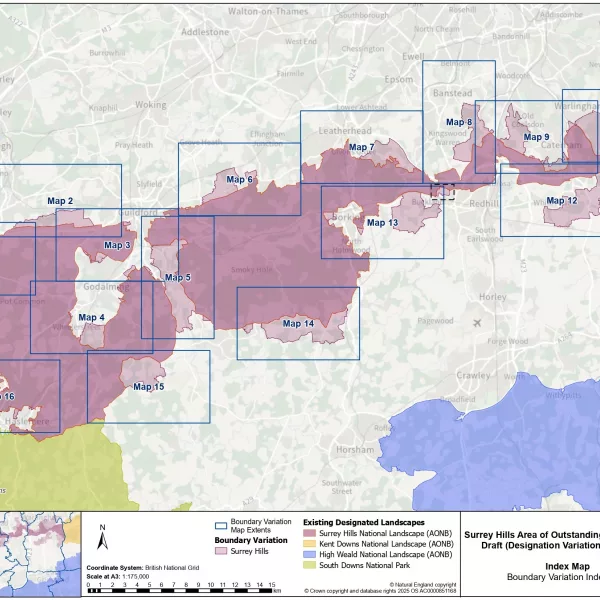
Proposed Reforms to National Planning Policy
The Department for Levelling Up, Housing and Communities (DLUHC) published the eagerly anticipated draft updates to the National Planning Policy Framework (‘NPPF’), on 22 December 2022. The draft updates are open for consultation until the 2nd March 2023. The publication comes after a turbulent year for the Government, which involved multiple leadership and cabinet re-shuffles.
The draft updates maintain the NPPF’s commitment to sustainable development, extending that this now includes “the provision of homes and other forms of development, including supporting infrastructure in a sustainable manner”. The provision of homes is an overarching focus throughout the updates to the NPPF, directing greater responsibility to local authorities, neighbourhood groups and community-led initiatives.
At the local level, preparing and maintaining up-to-date plans is a priority in meeting the objective of housing delivery. The update stresses that the overall aim [of local plans] “should be to meet as much housing need as possible with an appropriate mix of housing types to meet the needs of communities.” Local authorities will be required to provide a positive strategy, effective in delivery over the plan period and consistent with national policy.
Notwithstanding these positive statements and aspirations, the substance of the proposed updates effectively removes some of the onus on local authorities to meet their identified housing need. In this regard, it is difficult to view the updates as anything other than a regressive step, which will simply inhibit the process of delivering more homes. The extension of time for the delivery of neighbourhood plans from two to five years and the removal of the requirement for local authorities to have a three-year supply of deliverable housing sites (against its five year housing land supply (‘5YHLS’) requirement) with at least 45% delivery of this provided over the last three years, are rather stark moves which illustrate a significant shift in national policy. It is also notable that the 5YHLS buffer allocations applied by the Housing Delivery Test have been removed.
As planning consultants, we are acutely aware that Local Plans are routinely out-of-date by virtue of an under-delivery in housing and failure to demonstrate a 5YHLS. To remedy this, the updated framework outlines that should a Local Plan be out-of-date, local authorities are to identify and update annually a supply of specific deliverable sites sufficient to provide a minimum of five years’ worth of housing against their local housing need.
To further achieve housing delivery, the draft update proposes an uplift of housing provision for the most populated urban local authorities. Additionally, for areas where there are plans for economic development or infrastructure investment, a housing requirement may be higher than the identified need if it reflects provision for neighbouring areas or reflects growth ambitions established by the local authority.
With reference to Green Belt development, and in responding to climate change, updates to existing corresponding chapters have been included. Paragraph 142 outlines that “Green Belt boundaries are not required to be reviewed and altered if this would be the only means of meeting the objectively assessed need for housing over the plan period”. The apparent emphasis on protecting the Green Belt could be viewed as a nod to the Government’s grassroots, with votes at the next General Election a more prescient consideration than housing delivery.
There is also the sense of a dichotomy at play in the Government’s approach to Green Belt development, as evidenced in some notable appeal decisions prior to Christmas. Chief amongst these was the Secretary of State Decision on 14th December to uphold an appeal by Redrow Homes in York for 970 homes in the Green Belt. The Housing Minister concluded that although the proposal would constitute inappropriate development in the Green Belt and cause significant harm to openness, ‘very special circumstances’ existed, including the benefits of housing delivery. The fact that this Decision was made eight days prior to the publication of the draft updates to the NPPF poses questions over the Government’s direction of travel on Green Belt policy.
Having regard to climate change action, the draft updates state that local authorities are to approve applications for the repowering and life-extension of existing renewable energy sites which are proven to have an acceptable impact. Responding to the ongoing energy crisis, the update proposes to support energy efficiency improvements which aim to reduce energy consumption through the adaptation of existing buildings to improve their energy performance.
Whilst the updates to the 78-page document are relatively succinct in terms of word count, they have the capacity to enact profound impact on national planning policy. The diversion of responsibility beyond Government authority to the local level will impact the already overstretched and understaffed local authorities. We anticipate that these changes may cause further delays in decision-making and Local Plan roll-out without a significant uplift in funding to provide sufficient resources.
To view the full National Planning Policy Framework consultation draft, click here.
Other news
See all

London Housebuilding: Emergency Measures
The Government and GLA are currently consulting on two documents aimed at stimulating and reviving housing delivery across London, in response to a…...
Read now
Surrey Hills Area of Outstanding Natural Beauty - Boundary Extensions: Last opportunity to make representations
Natural England have given notice of their intention to Vary the Designation Order to include boundary extensions to the Surrey Hills Area of…...
Read now